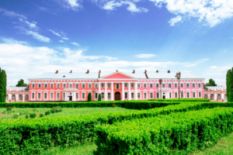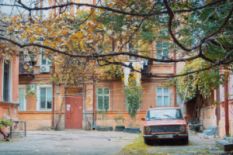Architecture and Early History
Zolochiv castle in Ukraine was built on the place of an old wooden fortification in 1634 by Jakub Sobieski – the father of the famous Polish king Jan III Sobieski. It was designed by an Italian architect – unfortunately, the history has not kept his name. The architecture of the castle keeps to so-called “palazzo in fortezzo” style, combining defensive and residential functions. Zolochiv castle is a two-storey square citadel, surrounded by ditches and high earth walls with bastilles on their edges. Such construction provided a wide view over surrounding landscapes and great advantages while using weapons in a battle. 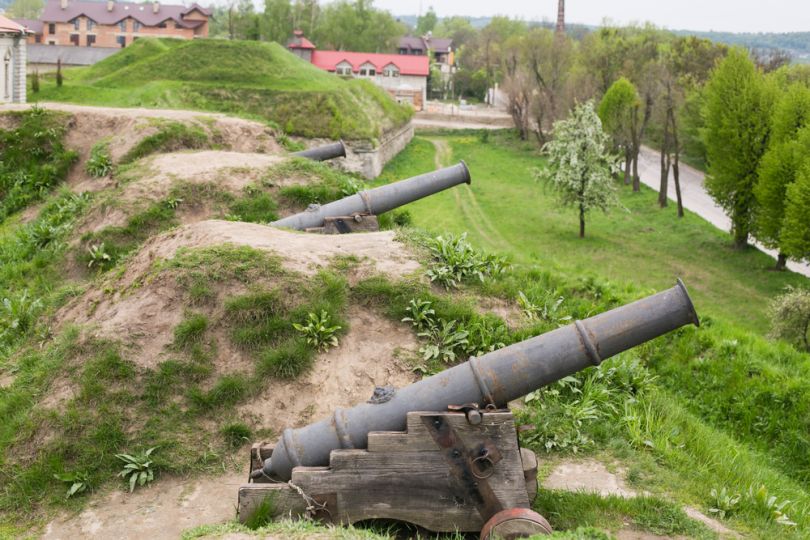
Zolochiv castle was made of stone according to the Dutch technology that was very popular in that period. The main fortification was a large earth wall with casemates inside, equipped with the system of communications. On the outside, the wall was reinforced with boulders; escarp of the wall faced the enemies.
It was very difficult to capture such fortification. Turkish and Tatarian armies tried to do it and failed many times. Only in 1672, the unwinnable fortress was conquered and ruined by the Turkish warriors headed by Kapudan Pasha. The future king of Poland Jan Sobieski (crowned in 1674) has reconstructed the castle in few years, and Zolochiv castle became a powerful military fortress and a royal residence. In 1675, the castle successfully withstood the assault of Tatarian army headed by Hagı I Giray.
The entrance gate of the castle is decorated with a lion head, and on observation towers visitors can see cryptonyms of the owners and patrons of the castle, for example, IS — initials of Jakub Sobieski. The private rooms of the royal family were located in a large two-storey palace. The palace had a heating system (four fireplaces) and even a canalization that was first-of-its-kind in this area. 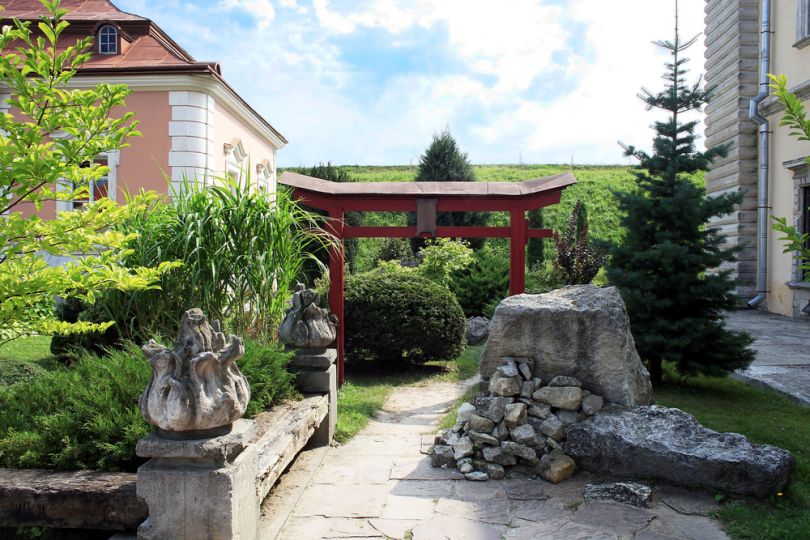
In the yard of Zolochiv castle, tourists can find a beautiful miniature building of Chinese castle. It was constructed by Jan Sobieski for his wife, Marie Casimire Louise de La Grange d'Arquien. Chinese castle is an elegant rotunda with a balcony and a sharp-pointed dome.
History of Zolochiv Castle in the XVIII-XX centuries
Zolochiv castle has served many purposes during its long history. In 1737, it became a possession of the Radziwiłł family. From 1802, it had been owned by Komarnistky family, who sold it to the Austrian government in 1840. Since that time, the castle has been used as a barrack and as a hospital. In 1872, it became a prison. In the Soviet era, from 1939, Zolochiv castle served as an NKVD prison. Many people were put to death here in those years. By the way, a little temple was installed near the castle in 1995 in the memory of NKVD victims. In 1953, the castle was turned into a vocational school. 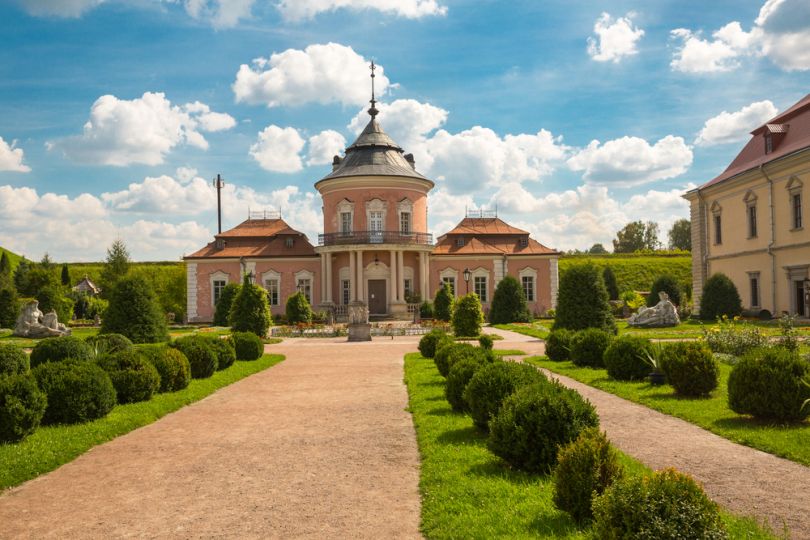
Luckily, in the 1980s Zolochiv castle got supervision of Lviv Art Gallery. The director of the gallery B. Voznistky put many efforts into reconstruction of the gorgeous palace in order to make it a museum.
Zolochiv Castle in Modern Times
Nowadays, Zolochiv castle is a museum that is a part of Lviv Art Gallery complex. In the yard of modern Zolochiv castle guests can see over-the-gate block, two-storey palace, Chinese palace and French park. The park impresses with paths that can boast clear geometrical lines, well-kept green bushes, trees, fountain and an exquisite sculpture of three cupids. 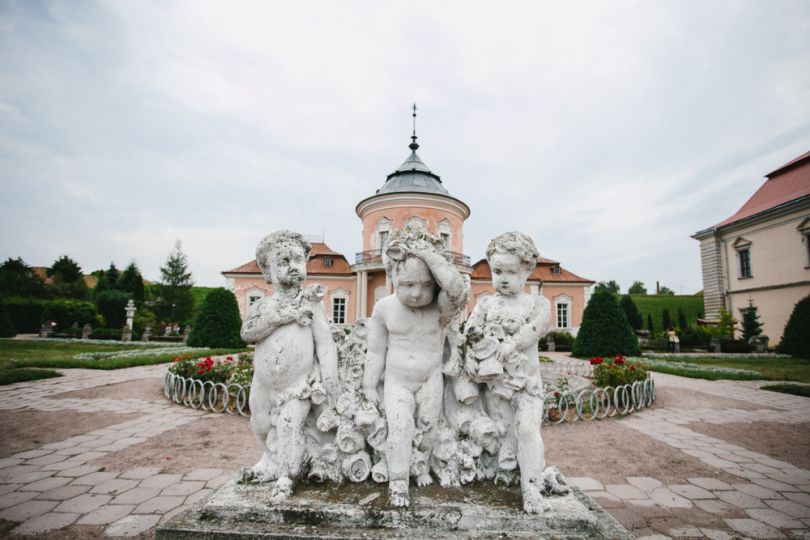
The museum functions inside the palace. The expositions are located in the restored rooms of the 1st and the 2nd floors and in the basement. Here you will see furniture and paintings of the XVII- XVIII centuries; the collection of hunting trophies; portraits of the famous European monarchs and emblems of European states; throne; copy of a French fireplace of the XVIII century; Lviv furnace of the XIX century; private collection of royal medals; possible variant of Daniel of Galicia crown. In 2016, Zolochiv castle presented new exposition called “Architectural fragments and light of the old Lviv”. It includes architectural elements of Lviv stone buildings of the XV-XVI centuries, different lanterns and sculptures.
As for Chinese castle, it welcomes to see Oriental culture exposition. Here you will find many objects of Oriental art. Many of them were gifts of the Eastern ambassadors. 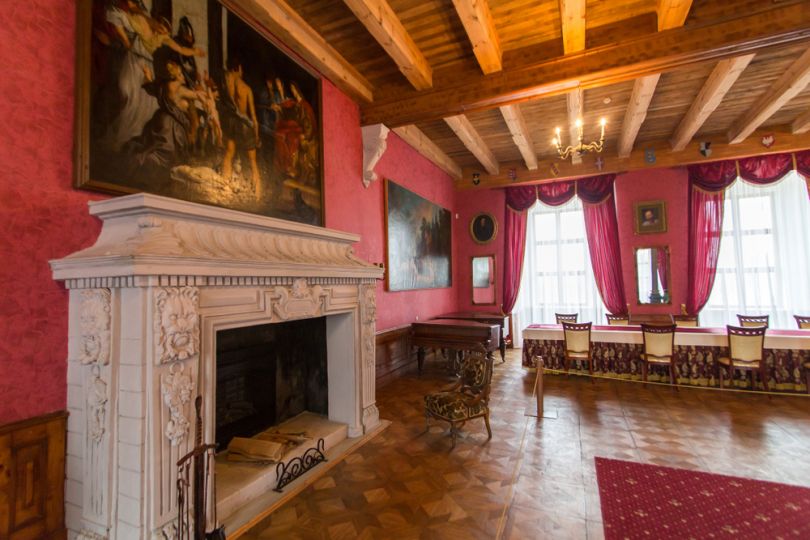
In the reconstructed ravelin, guests can visit café and souvenir shop.
So how to travel to Zolochiv castle? The sight is located only 66 km away from Lviv. Just take a bus to Zolochiv from Lviv or Ternopil – and you are there. It is reasonable to visit Zolochiv castle in the course of Golden Shoe route excursion so that you will also see other amazing palaces.
A visit to Zolochiv castle will surely expand your horizons of knowledge about Ukrainian history and architecture. Welcome!
Address: 5, Ternopilska street, Zolochiv, Lviv oblast`
Photo source: shutterstock.com. All photos belong to their rightful owners.
